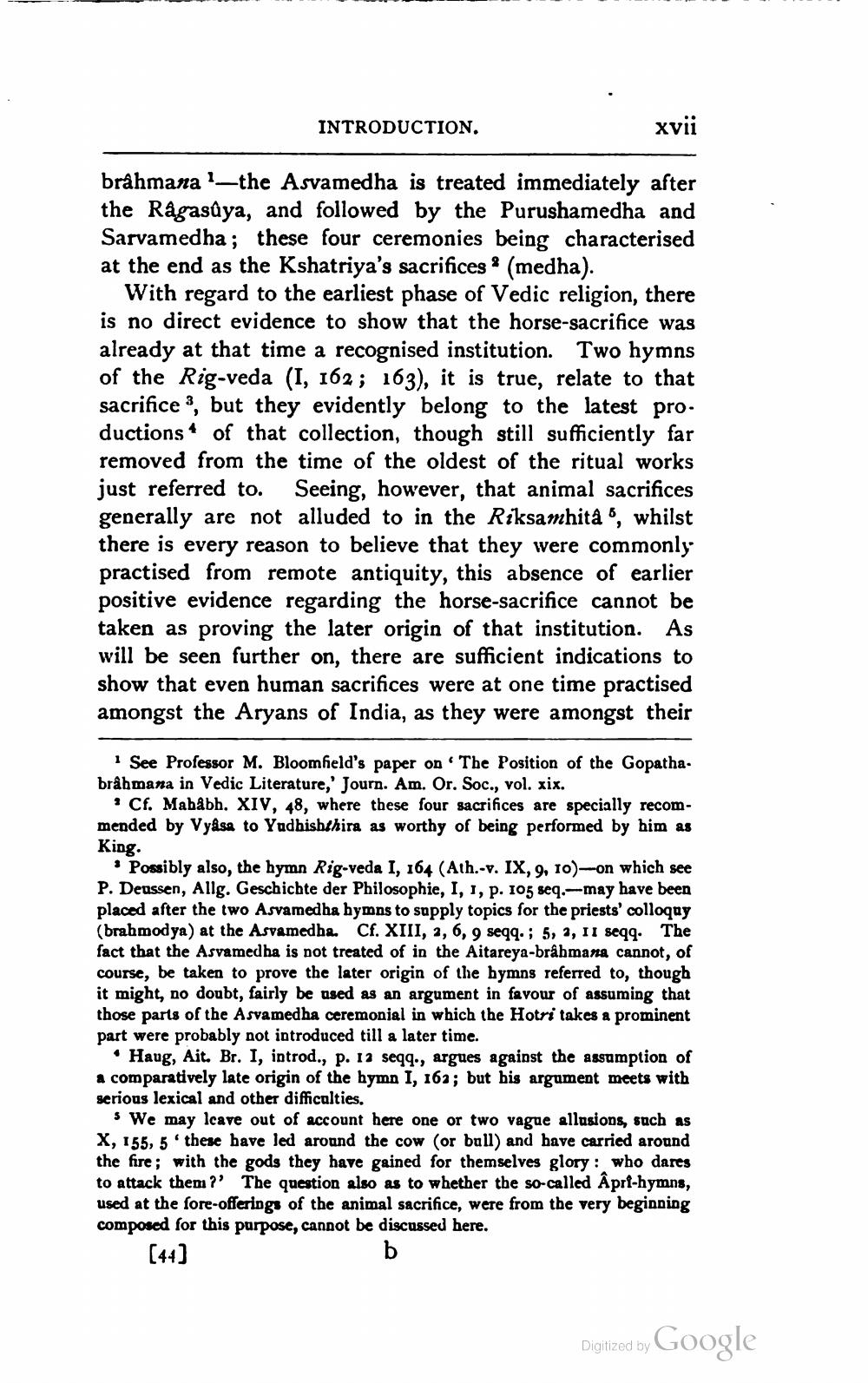________________
INTRODUCTION.
xvii
brahmana _the Asvamedha is treated immediately after the Rågasuya, and followed by the Purushamedha and Sarvamedha; these four ceremonies being characterised at the end as the Kshatriya's sacrifices * (medha).
With regard to the earliest phase of Vedic religion, there is no direct evidence to show that the horse-sacrifice was already at that time a recognised institution. Two hymns of the Rig-veda (I, 162; 163), it is true, relate to that sacrifice, but they evidently belong to the latest pro. ductions of that collection, though still sufficiently far removed from the time of the oldest of the ritual works just referred to. Seeing, however, that animal sacrifices generally are not alluded to in the Riksamhita", whilst there is every reason to believe that they were commonly practised from remote antiquity, this absence of earlier positive evidence regarding the horse-sacrifice cannot be taken as proving the later origin of that institution. As will be seen further on, there are sufficient indications to show that even human sacrifices were at one time practised amongst the Aryans of India, as they were amongst their
See Professor M. Bloomfield's paper on The Position of the Gopathabrahmana in Vedic Literature,' Journ. Am. Or. Soc., vol. xix.
. Cf. Mabábh. XIV, 48, where these four sacrifices are specially recommended by Vyasa to Yudhishthira as worthy of being performed by him as King.
• Possibly also, the hymn Rig-veda I, 164 (Ath.-v. IX, 9, 10)-on which see P. Deussen, Allg. Geschichte der Philosophie, I, 1, p. 105 seq.-may have been placed after the two Asvamedha hymns to supply topics for the priests' colloquy (brahmodya) at the Asvamedha. Cf. XIII, 2, 6, 9 seqq. ; 5, 2, II seqq. The fact that the Asvamedha is not treated of in the Aitareya-brahmana cannot, of course, be taken to prove the later origin of the hymns referred to, though it might, no doubt, fairly be used as an argument in favour of assuming that those parts of the Asvamedha ceremonial in which the Hotri takes a prominent part were probably not introduced till a later time.
Haug, Ait. Br. I, introd., p. 12 seqq., argues against the assumption of a comparatively late origin of the hymn I, 162; but his argument meets with serious lexical and other difficulties.
S We may lcave out of account here one or two vague allusions, such as X, 155, 5 these have led around the cow (or ball) and have carried around the fire; with the gods they have gained for themselves glory : who dares to attack them ?' The question also as to whether the so-called Aprf-hymns, used at the fore-offerings of the animal sacrifice, were from the very beginning composed for this purpose, cannot be discussed here.
[44]
Digitized by Google




